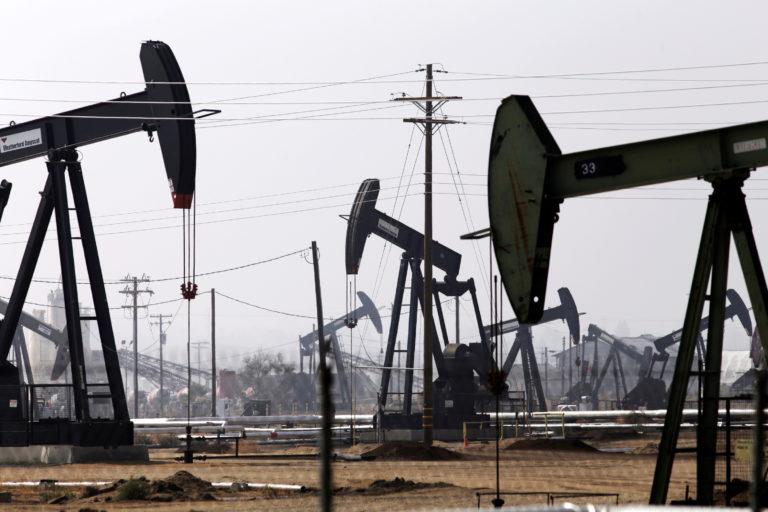States
The Lingering Impact Of Racism On Black Californians In Oil And Gas Drilling

Black Californians Injustice History
Early 20th-century Los Angeles racism helped distribute oil and gas drilling locations, disproportionately hurting Black areas. Redlining kept nonwhites in poor communities. The 1920s oil boom perpetuated environmental inequality by highlighting racial disparities. This historical backdrop helps explain Black Californians’ problems near oil and gas extraction sites.
Unfair Health Risk Exposure
Studies indicate that many Black Californians reside close to active oil and gas wells, exposing them to dangerous VOCs and BTEX toxins. Chronic pollution exposure may cause respiratory illnesses, malignancies, and other significant health consequences. Drilling in disadvantaged areas perpetuates health inequities, increasing concerns about Black communities’ well-being and the need for environmental justice.
Continued Regulatory Protection Battles
Despite attempts to enforce safety standards, the oil sector has slowed progress in protecting vulnerable populations. Recent efforts to construct safety buffer zones around drilling sites were greeted with opposition and disinformation campaigns, underscoring environmental policy issues. Some towns have passed laws to reduce the effect of oil and gas production on underprivileged groups. However, outdated infrastructure and abandoned wells offer continuous concerns, emphasizing the need for proactive environmental protection for Black Californians and other vulnerable communities.
Health And Race Disparities
Oil and gas drilling has caused health inequalities among Black Californians, underscoring the need for specific treatments. Studies indicate a correlation between proximity to drilling sites and respiratory issues. In addition, toxic substances in the air and water have been related to cardiovascular disorders and developmental difficulties, especially in children. These health inequalities highlight the link between racial injustice and environmental well-being, underlining the need for comprehensive policies that prioritize disadvantaged populations’ health and safety.
Community Advocacy, Local Initiatives
To address oil and gas drilling’s persistent issues, grassroots advocacy groups and community organizations have formed to empower neglected populations and effect change. Local campaigns have helped raise awareness of drilling’s disproportionate effect on Black areas and advocate for stricter environmental laws. Community participation and education have enabled citizens to express their rights and demand responsibility from industry players and government authorities. These efforts are a significant step toward environmental justice and tackling oil and gas industry inequalities.
Read Also: California Black Women Health Project Strives For Equitable Maternal Care And Reproductive Justice
Forward To Sustainability And Equity
Environmental equality is crucial as California transitions to renewable energy and sustainable practices. Identifying and addressing abandoned and retired wells is vital because they continue to threaten adjacent communities, predominantly Black and low-income ones. Preventing environmental deterioration and protecting vulnerable people requires investing in extensive cleanup and monitoring and maintaining aged infrastructure. To ensure that the transition to a sustainable future is equitable and just for all Californians, especially those who have historically suffered environmental racism, inclusive decision-making processes that actively involve affected communities in environmental policy and regulation development are essential.
Policy Issues And Industry Accountability
Policymakers and regulators face complicated environmental policy issues in the setting of racial inequality. The oil and gas industry’s influence on legislative and regulatory procedures frequently inhibits disadvantaged community protection. These systemic issues demand a complete policy review to promote environmental justice and guarantee industrial practices are fair and sustainable. Establishing open industry accountability and monitoring procedures is essential to creating a regulatory climate that prioritizes Californians’ well-being regardless of race or socioeconomic background.
Environmental And Social Justice Intersect
Environmental justice and social equality show how racial inequities and environmental degradation are linked. The multifaceted effects of discriminatory behaviors on vulnerable populations highlight the necessity for comprehensive responses to environmental racism’s structural origins. Community empowerment, access to resources, and knowledge are essential to building resilient, sustainable communities that can participate in environmental and public health decisions. Policymakers may encourage inclusion and justice via comprehensive measures that include social and ecological aspects, creating a more fair and sustainable future for all Californians.
Collective Action For Environmental Equity
Enabling communities to fight for their rights and propose sustainable solutions is critical to environmental fairness. Collaboration between community-based organizations, advocacy groups, and government agencies may promote meaningful discourse and inclusive policies that benefit excluded groups. To ensure that ecological injustice victims’ views are heard and appreciated, significant involvement and representation in environmental decision-making processes are necessary. California should prioritize collective action and solidarity to create a sustainable, equitable future that ensures the health, safety, and dignity of all citizens, regardless of race, ethnicity, or socioeconomic status.












You must be logged in to post a comment Login